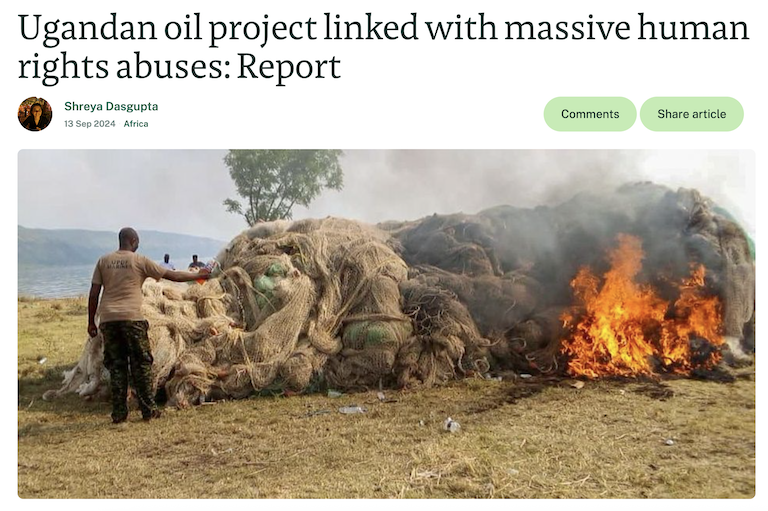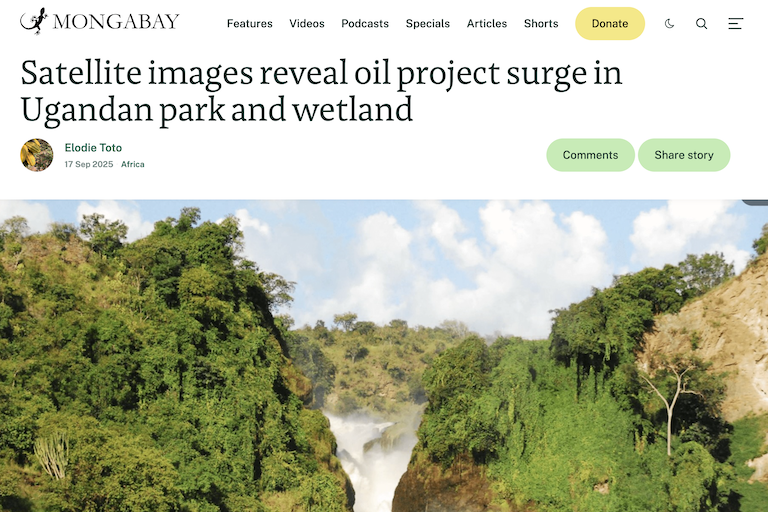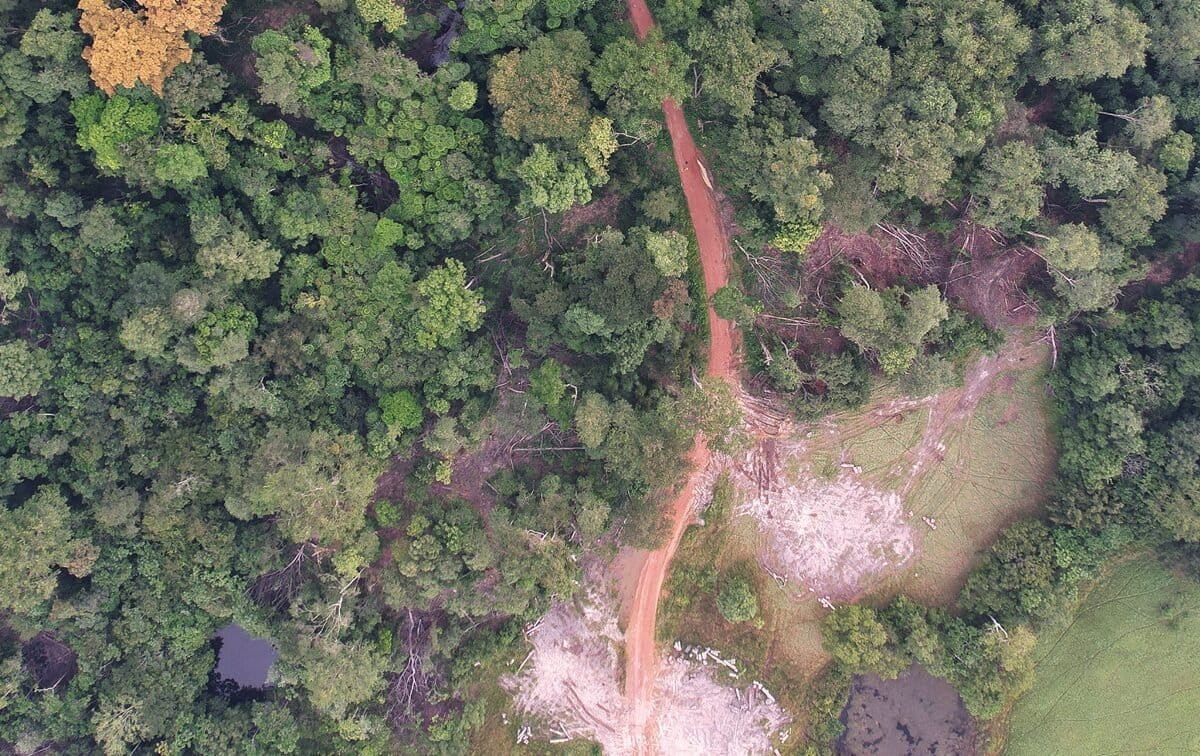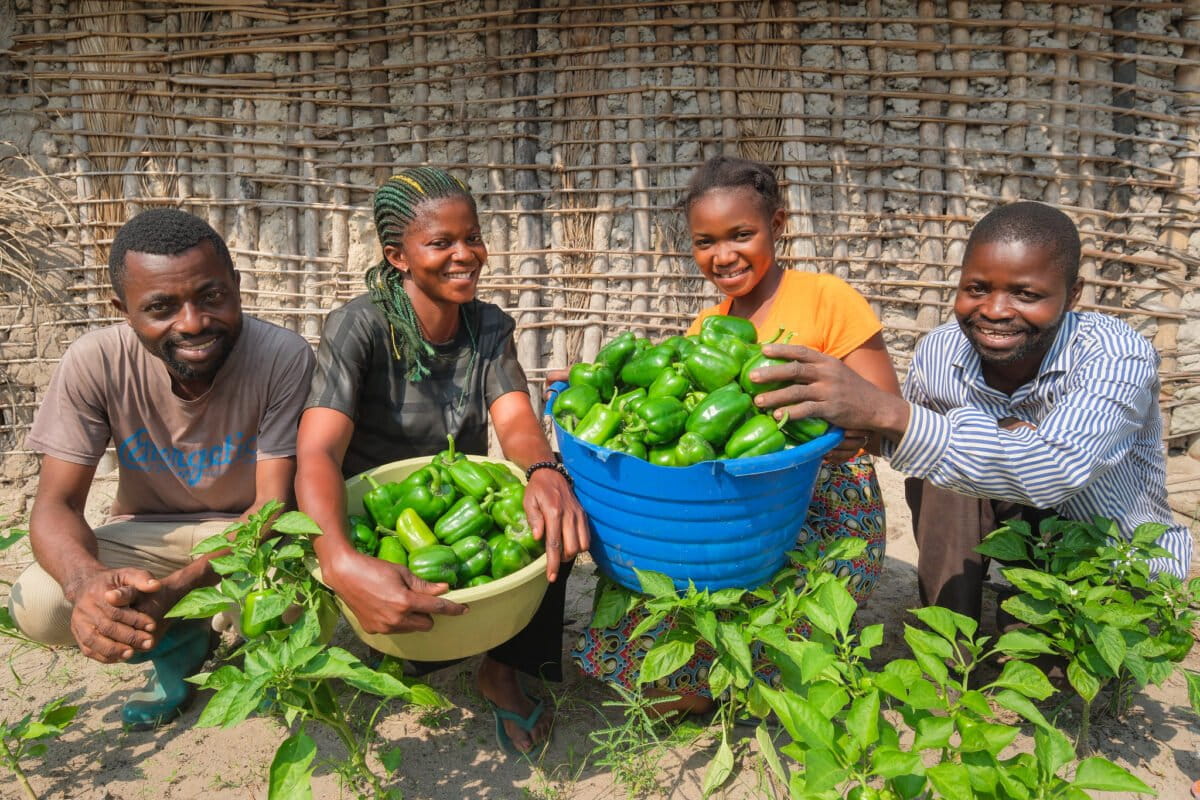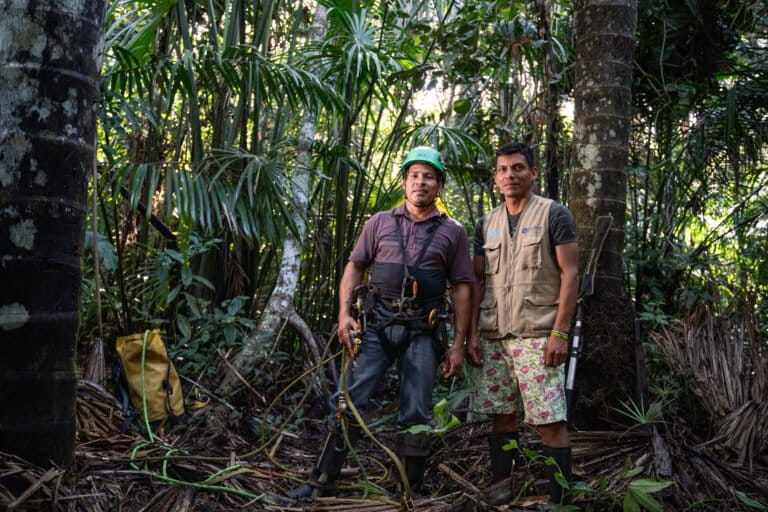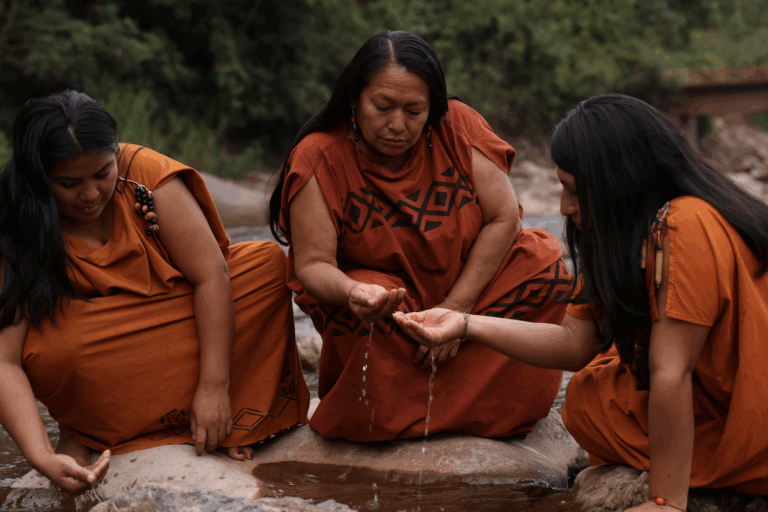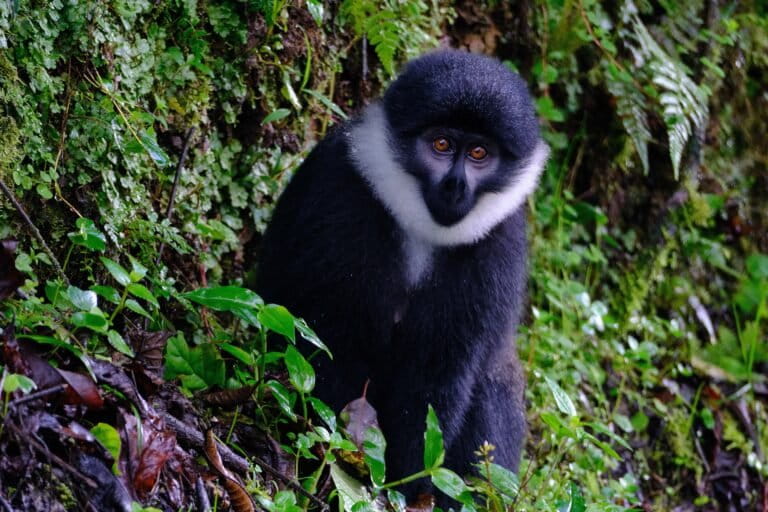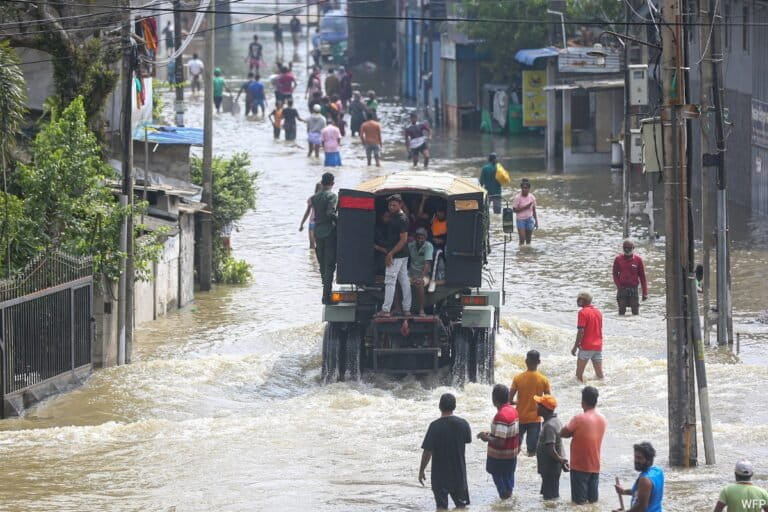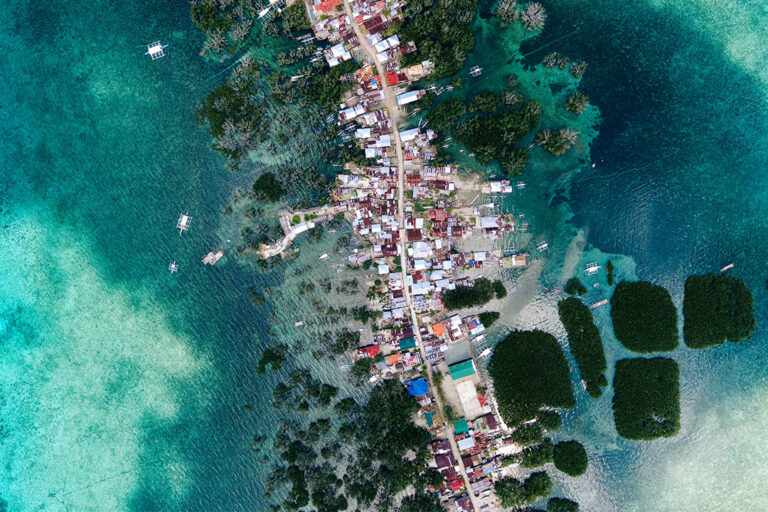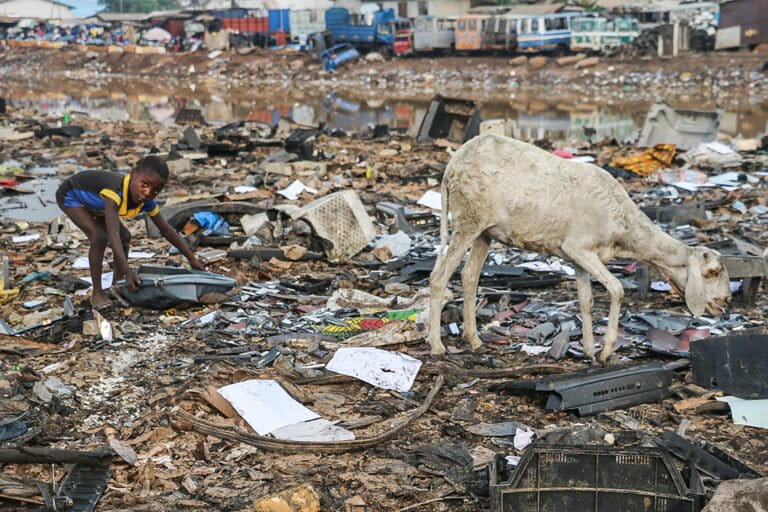- Thousands of households in Uganda and the Democratic Republic of the Congo rely on Lake Albert for their daily water needs and for fish, and it provides key habitat for unique wildlife like shoebills and Goliath herons.
- Two oilfields — Kingfisher on its eastern shore and Tilenga near the northeastern terminus of Lake Albert — in active development there, by the Ugandan affiliate of Chinese National Offshore Oil Corporation (CNOOC) and Total E&P Uganda respectively, appear to be a threat to water quality and wildlife, a new op-ed argues.
- “Issues such as the lack of commitment to a system of sound disposal of water, sewage and drilling cuttings all portend a bad omen in an area that is home to some unique wildlife,” the author writes.
- This post is a commentary. The views expressed are those of the author, not necessarily of Mongabay.
Fears of underinvestment in mitigation against oil spills, poor waste disposal and water overuse remain a major concern for environmentalists, even as Uganda insists adequate measures are in place to protect Lake Albert and the surrounding ecosystem from the adverse effects of petroleum exploration and development.
A report commissioned by my organization, Environmental Defenders — a conservation and human rights organization dedicated to protecting biodiversity and Indigenous communities’ rights — finds that destruction of biodiversity, spills and pollution of underground waters are phenomena increasingly present in the Albertine region.
The report particularly decries the installation of oil facilities on the shores of Lake Albert without adequate investment in mitigation measures for the Tilenga and Kingfisher areas. According to the report, they pose major threats to the environment, water and health of communities around the lake.
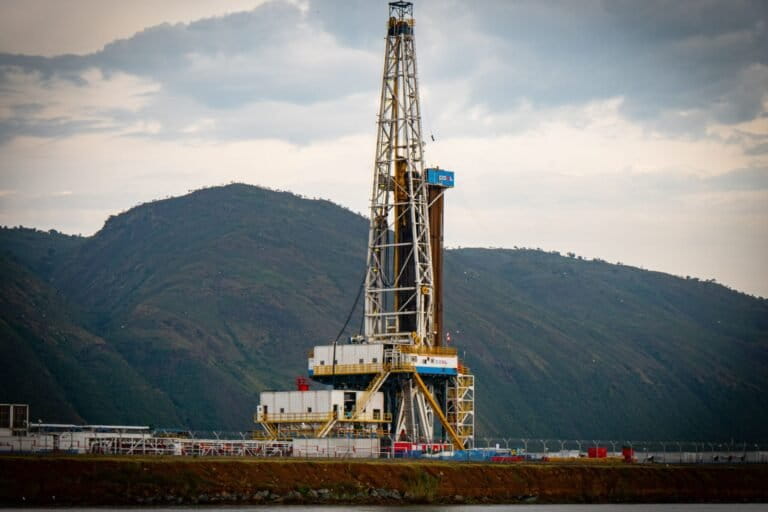
In the Democratic Republic of Congo (DRC), about 100,000 households rely on Lake Albert to meet their water needs, and more than 20,000 people take fish from the lake. Consequently, there are fears that a major oil spill would threaten the very existence of these communities, yet mitigation against such an occurrence has not been adequate.
E-Tech International has previously established that the technology being used in the Albertine region is aimed at maximizing profit and not protecting the environment. The focus on using cheap technology to maximize profits is, according to the report, a danger, given that 10 well pads, 181 kilometers (112 miles) of pipeline, and road infrastructure are to be located in nearby Murchison Falls National Park.
The report explains that the park serves as a habitat to increasingly rare wildlife that cannot coexist with oil development operations. Because it has a diverse range of flora and fauna, Murchison Falls National Park requires delicate handling, which its author suggests can be achieved through the employment of the best available technology.

For example, report author E-Tech International recommends a reduction of oil wells for Tilenga from 10 to two well-placed ones, to reach all oil reserves in that area, arguing that the move would represent best practice.
Nevertheless, critics of the report assert that its recommendations are merely opinions, and that best practices are already in place. According to project supporters, including those employed by government agencies such as the National Environment Management Authority (NEMA), satisfactory mitigation measures were identified, and their implementation has been proceeding smoothly.
They also assert that the exploration phases were successful and that the production stage has not encountered any challenges thus far. They also assert that expert teams are present on the ground to monitor and ensure mitigation in the event of any changes.
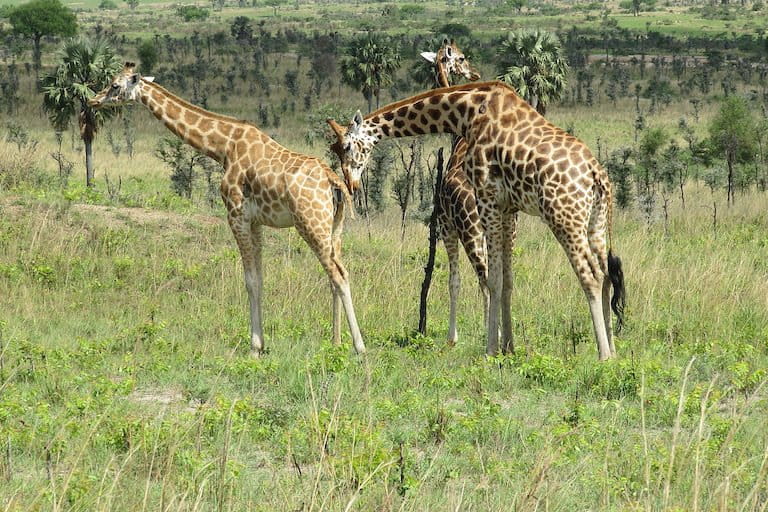
It remains to be determined whether that confidence in adequate investment is warranted, as concerns such as the absence of a commitment to a system of sound disposal of water, sewerage, and drilling debris all suggest a negative outcome in an area that is home to some distinctive wildlife.
Environmental Defenders also notes that the use of chemical-based drilling mud is a danger to the ecosystem around Lake Albert.
Additionally, there are fears that once oil production starts, it will be difficult to manage the natural stormwater alongside the large volumes of effluent and solid waste, which could increase the risk of hydrocarbon-contaminated drainage escaping into the Kamansinig River and the surrounding wetlands.
Robert Agenonga is a strategic support adviser for Environmental Defenders.
Banner image: Shoebills are one of the unique species that rely on Lake Albert in Uganda. Image by Emilie Chen via Flickr (CC BY-ND 2.0).
Related audio from Mongabay’s podcast: A Mongabay Africa investigation recently revealed that the Republic of Congo issued several dozen gold mining permits inside a swath of forests protected by a carbon offset project (REDD+), leading to deforestation of the area, listen here:
See related coverage:



